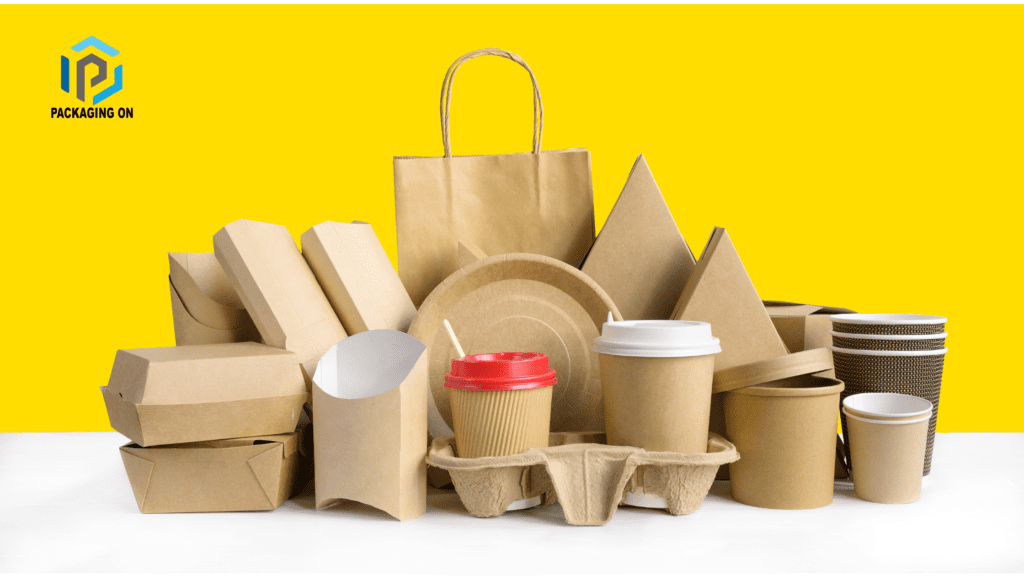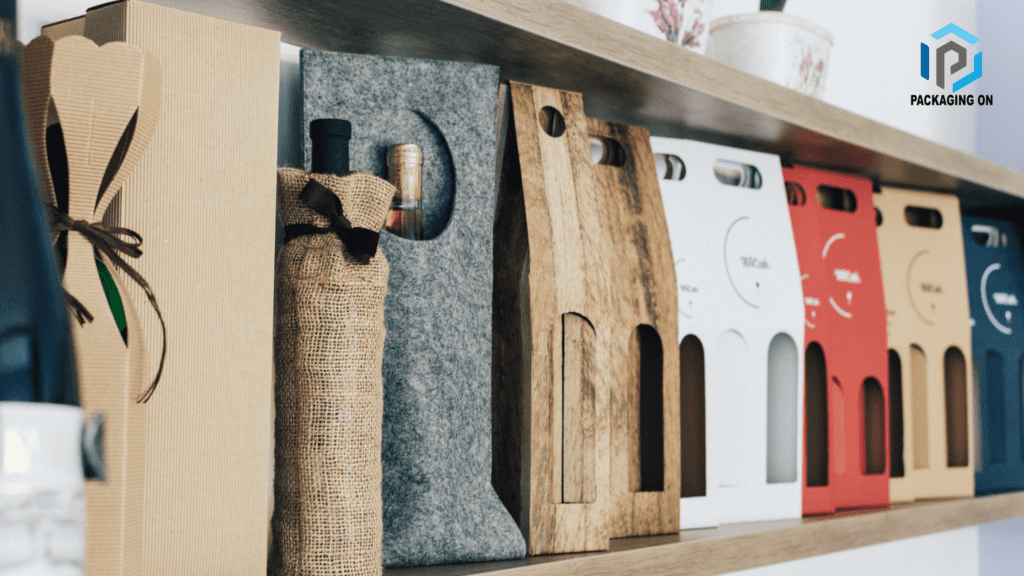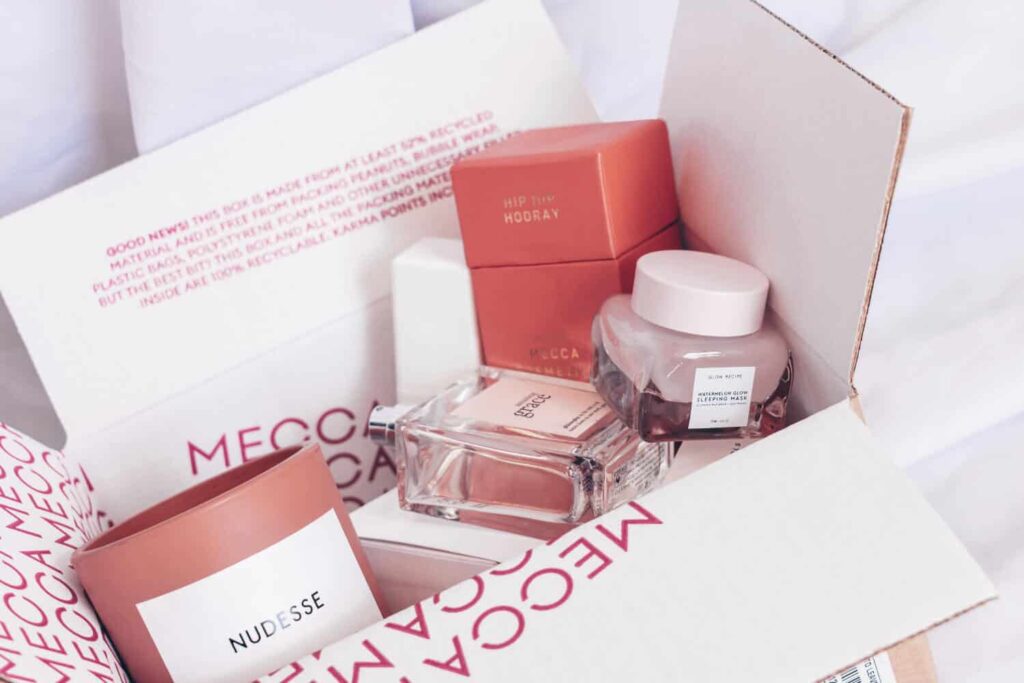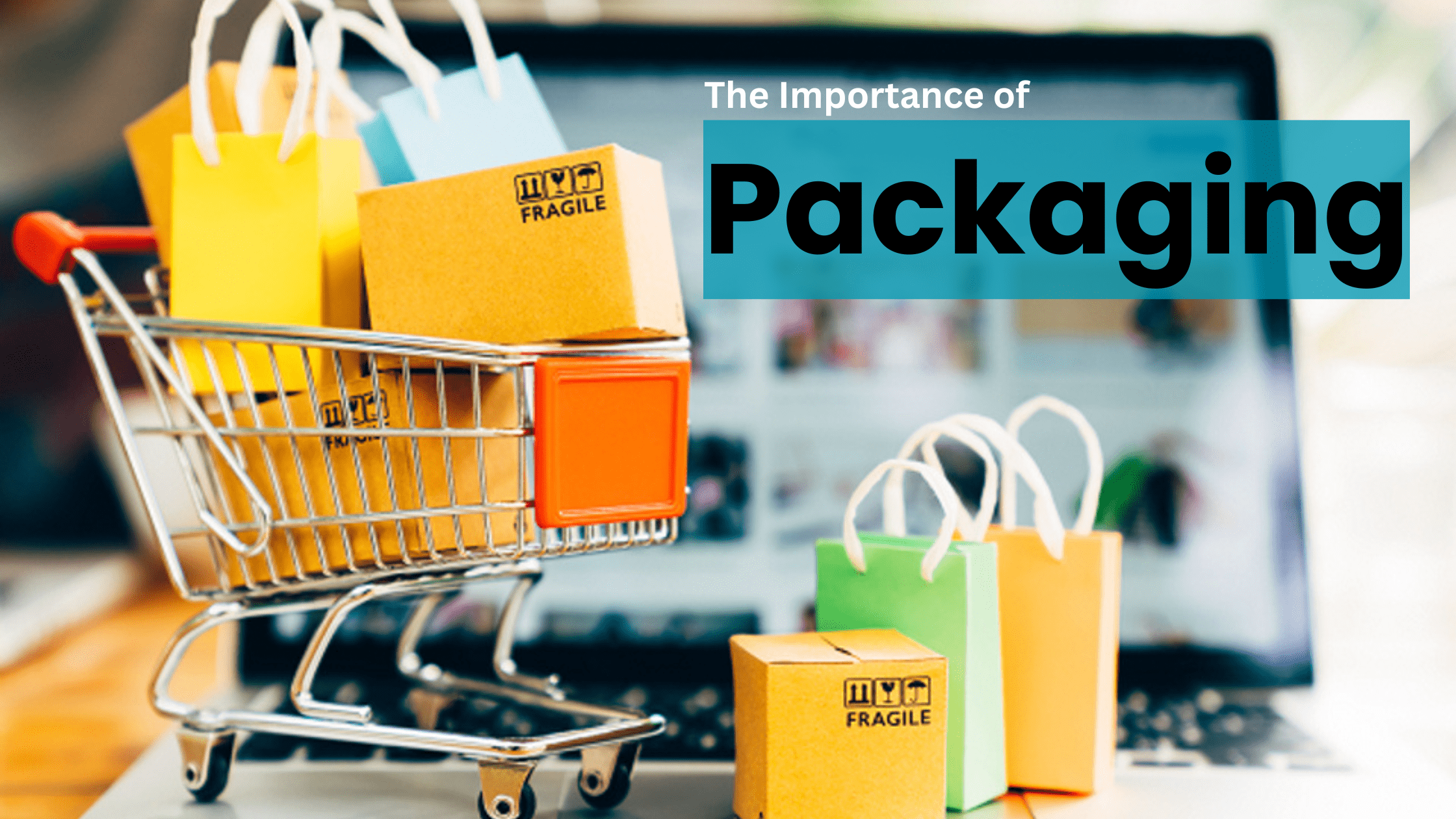The Importance of Packaging- An Overview
 Sustainable Packaging Retail Product What usually draws your attention when you go into a shop? More often than not, people see the packaging first. Indeed, packaging is more than just an enclosure of products; it is colorful and creative and offers an experience. Considering the options available today, people will go for the perfect packaging when deciding on an item. When you want to search the title ‘custom boxes near me’ or any other title selling ‘boxes by cardboard packaging manufacturers’ you are not only looking for utility. You are looking for something appealing and creative.
Sustainable Packaging Retail Product What usually draws your attention when you go into a shop? More often than not, people see the packaging first. Indeed, packaging is more than just an enclosure of products; it is colorful and creative and offers an experience. Considering the options available today, people will go for the perfect packaging when deciding on an item. When you want to search the title ‘custom boxes near me’ or any other title selling ‘boxes by cardboard packaging manufacturers’ you are not only looking for utility. You are looking for something appealing and creative.
Packaging is not just an enclosing material; its importance is fully felt in marketing. It is deep rooted into the image and purchase or buying choices of the consumers. As the brands adjust to brand loyalty, it is only the deep understanding of these dynamics which assists in increasing the sales and enhancing consumption. Let’s take a closer look at the packaging.
Understanding the Concept of Perceptions and Creating the Right Ones
One of the main functions of packages is to protect your products. However, it is also important to remember that the package itself contains important features and details that influence the consumer. Colors, shapes, and even textures have the power to elicit emotions and associations.
While bright colors may energize, muted tones often portray elegance and sophistication. Black or gold is frequently chosen by luxury brands to communicate a sense of high class. This type of color is perfect as it works great with our instincts.
Textures are important as well, a glossy finish can be used for modernity while rough surfaces can be used for original and organic purposes. It is common that shoppers want to feel products before they buy them, hence, tactile elements hold high influence when it comes to such interaction.
In addition, visuals and designs allow packaging to speak. A package well designed represents the its marketers values- eco-friendliness with green leafs images, or stylish lines with innovation.
Design should meet expectations of the audience that the brand targets. If connectivity is created through packaging, emotional purchase likelihood increases.
Types of Packaging and Their Effect on Consumer Consciousness
Shoppers are likely to view packaging quite differently since there are various types. Rigid packaging such as boxes and cans convey a sense of sturdiness and quality. It usually implies that it is a quality product which one can rely on.
On the other hand, flexible types of packaging include pouches or wrappers which are more apt for portability. Pouches and wrappers follow a relatively small thesaurus and therefore modify strong appeal towards busy people and enhance the excitement of unwrapping.
There are increasing ideals for eco-friendly packaging as well. Eco-friendly packages represent the commitment of the brand while complimenting explorators and encouraging them to feel closeness with the brand.
There are also significant emotional factors, especially relating to color. Bright colors are appealing and can evoke certain feelings, while subdued colors are indicative of elegance and sophistication.
Another aspect are textures: soft-touch finishes create an experience that encourages getting up close. In branding, packaging is an essential and integral part as it delivers and communicates more than just a practical aspect: it creates and alters attitudes and behaviors.
Case Studies: Successful Packaging Strategies in Different Industries.
Coca-Cola’s contour bottle is more than a fashionable item; it’s a trademark. It is easily noticeable on the shelves and is rather nostalgic in terms of its invention. This innovative development definitely contributes to the elevation of the item because it assures the consumers regarding the brand.
Apple’s Sustainable Packaging Retail Product is no ordinary strategy either and so are their toys. They don’t need to have complex forms; simplicity is their goal to achieve and they surely do. Apple devices come in beautifully crafted boxes that contain the devices and add to their unboxing experience – making buyers feel appreciated.
When it comes to the skin care sector, Aesop for instance has bottled products in brown colored glass, the kind that does not easily break with minimalist looking labels for a sense of class. This enhancement not only maintains the quality standards of the goods but also protects the environment as desired by today’s consumers.
Similarly, Nature Box tends to utilize a combination of different colors for its packaging especially for the healthier range of products. The assortment of colors used in the packaging suggests that the products are all fresh whilst the playful aspects of the design appeal to their customers.
 : The Future of Packaging
: The Future of Packaging
Sustainable Packaging Retail Product is not merely a marketing strategy; it is increasingly becoming a more decisive factor in purchasing decisions. With time, and especially in the recent years, brands have had to change their tools to more environmentally-friendly products.
Today’s consumers are concerned with reducing the unnecessary number of plastic and packing wastes. Accordingly, these materials have been received very well by eco-conscious clients who prefer custom boxes made of recycled materials.
Progressive businesses are showcasing their eco-friendly ethics through designs that are reusable or biodegradable. So too are cardboard packaging manufacturers, who are making strides in marrying the twin goals of aesthetics and sustainability in their products.
This trend however is more than just a moral issue; it is also good business. Sustainable brands tend to command a higher degree of loyalty and engagement from their customers. In times when it is almost impossible to miss out on every sale, matching one’s values with the values of the target audience can go a long way in sales performance.
Branding And Packaging: The Connection
One of the purposes of Sustainable Packaging Retail Product is to appeal to the customers, which is often signage. Data on psychology indicates that consumers make a decision regarding your company at first sight. The correct typographic and color schemes make it possible to invoke certain feelings and even establish a bond.
Particular designs cultivate an image in an efficient manner. A product’s marketing strategy is essential for competitive markets. A robust brand presence in packaging packaging reinforces transparency and trust on the part of the consumers.
As can be seen, packaging goes beyond just protecting products; it also serves as a representation of the brand ‘s philosophies which in turns helps build customer loyalty. For instance, the consumer will view a product using sustainable materials or innovative design in a more positive light thereby increasing the chances of the product being bought.
Research indicates that when a brand consistently applies the same name, symbol, or design to its products, it strengthens brand recognition and promotes repurchase behavior. Consumers are likely to stick to familiar brands whenever they are purchasing.
Branding is also an effective tool when dealing with product packaging. Well packaged products with a good branding strategy help the customer in remembering the product leading to increased sales.
How To Design Packaging Effectively
Before designing any packaging, make sure the target market is understood – even before drawing. Look into target statistics, preferred product placement and suitable design options.
Human senses are very strong, and they do play an important role in branding. Colors should be appropriate to the brand while bringing out feelings that the brand intends to portray. It is advisable to use warm colors for attention-grabbing activities.
The function comes first. Packaging should be fit for purpose and protect the contents, while still being convenient and easy to use for the end user. If the packaging is great then the consumer shopping experience is also pleasant.
The proper alignment and placement of typography should always be considered when designing the packaging. Now, customers want crisp clear messages and reliable suggestions without any misunderstanding.
You should also examine eco-friendly materials. Eco-friendly markets also have up-scaled value due to rising environmental concerns. Using eco material helps improve a brand image greatly.
Try to get as much feedback and data as possible before final production. It is wise to include the customers in the process of making the purchasing decisions. Feedback helps to improve designs.

Conclusion: The Power of Packaging in Increasing Sales and Establishing Brand Loyalty
It is one thing to protect products through packaging, and it is quite another to enhance the brand’s identity
and its customers’ perspective. Effective packaging has the potential to captivating customers, suggesting quality, and building trust. For instance, when customers see tailored boxes for sale accompanied by distinctive visuals or innovative designs with packaging manufacturers, they form positive perceptions around them.
Every successful brand knows that every detail matters. Even the materials as well as design elements are essential in determining product appeal in a rather competitive industry. For example, simply incorporating great product sleeve designs extends the visual appeal of the products while delivering their primary functions effectively.
As new generation consumers mature, sustainable choices become commonplace. Considering shoppers’ growing eco awareness, investing in an environmentally friendly brand certainly increases customers’ loyalty and helps attract customers that want a responsible brand.
Thoughtful packaging strategies when implemented, can pay off through increased sales, and building brand loyalty. In this competitive day and age, brands that thrive are those that respect this aspect; they confidently stand out from competition.

